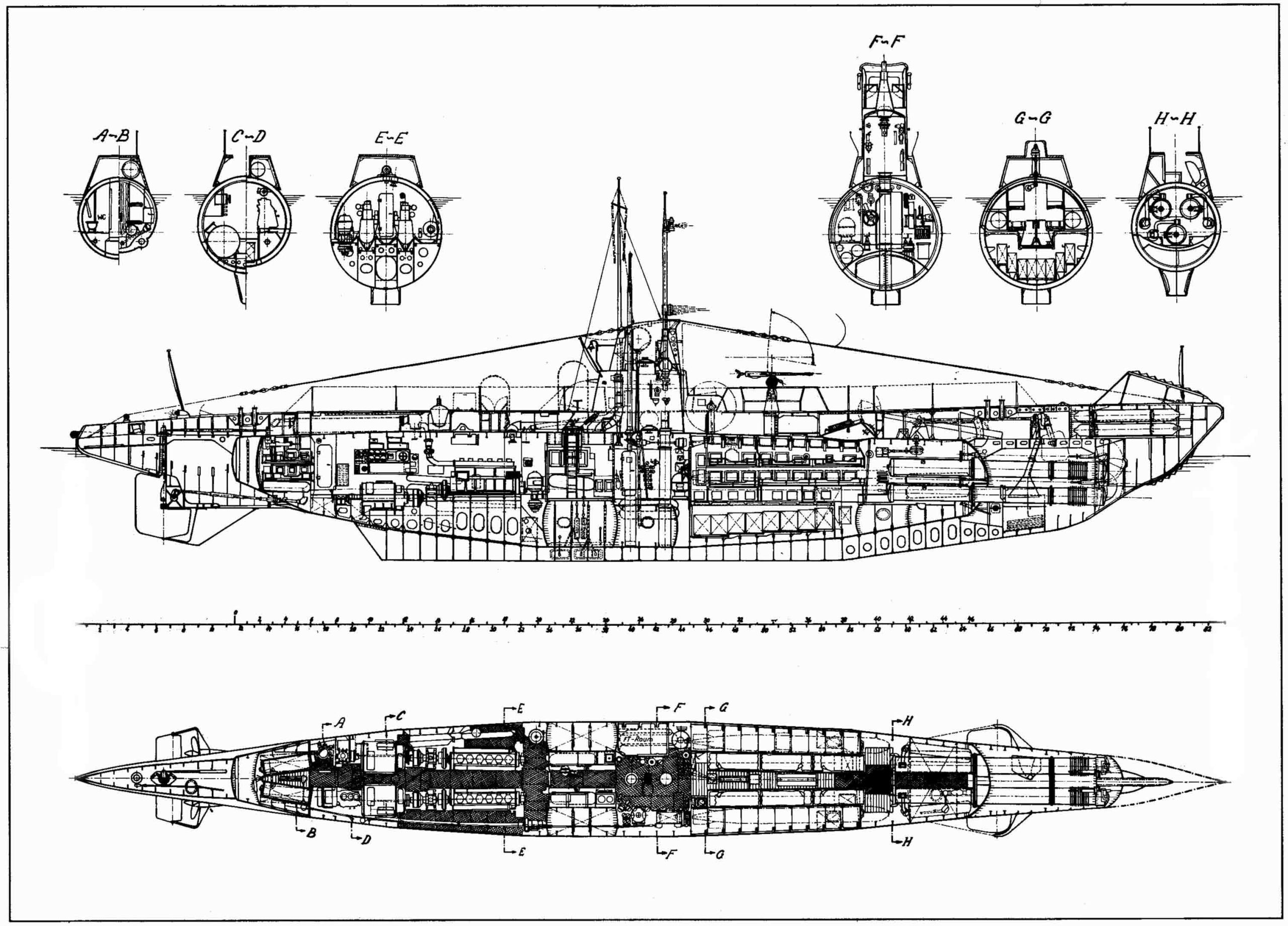
Type II submarines. Birth of the U-Bootwaffe
Submarines type II D - two in front - and II B - one in the back. Identification marks attract attention. From right to left: U-121, U-120 and U-10, belonging to the 21st (training) submarine flotilla.
The Treaty of Versailles, which ended World War I in 1919, forbade Germany, in particular, from designing and building submarines. However, three years later, in order to maintain and develop their construction capabilities, the Krupp plants and the Vulcan shipyard in Hamburg established the Ingenieurskantoor voor Scheepsbouw (IvS) design bureau in The Hague in the Netherlands, which develops submarine projects for foreign orders and supervises their construction. The office was secretly financed by the German Navy, and the lack of experienced personnel in the buyer countries served as a cover for the training of German submarines.
genesis
Among the foreign orders received by IVS, as a result of a strong German lobby, there are two Finnish orders:
- since 1927, three Vetehinen 500-ton underwater minelayers built under German supervision at the Crichton-Vulcan shipyard in Turku, Finland (completed 1930-1931);
- from 1928 for a 99-ton minelayer, originally intended for Lake Ladoga, built in Helsinki before 1930, named Saukko.
The deadline for the order was delayed due to the fact that the Finnish shipyards had no experience in building submarines, there were not enough technical personnel, and in addition, the problems were caused by the global economic crisis of the late 20s and 30s and the strikes associated with it. The situation improved due to the involvement of German engineers (also from IVS) and experienced shipbuilders who completed the building.
Since April 1924, IVS engineers have been working on a project for a 245-ton ship for Estonia. Finland also became interested in them, but decided to first order 500-ton units. At the end of 1929, the German Navy became interested in the project of a small ship with a short construction time, capable of carrying torpedoes and mines operating off the coast of Great Britain.
Vesikko - German experiment under Finnish cover
A year later, the Reichsmarine decided to commission the development of a prototype installation for export. The purpose of this was to enable German designers and shipbuilders to gain valuable experience in order to avoid “childish” mistakes in the future when building a series of at least 6 ships for the needs of Germany, while achieving a construction time of no more than 8 weeks.
at any shipyard (with round-the-clock work). Subsequent sea trials were also to allow the use of "old" submarine officers in the reserve to train the younger generation of officers. The installation had to be built in the shortest possible time, since the second goal was to conduct tests with a new torpedo - type G - electrically driven, 53,3 cm, 7 m long - G 7e.